
Return Of The Jedi, the third film in the original Star Wars trilogy, premiered in May 1983. The same month, Atari capitalised on the latest instalment by releasing its Star Wars arcade game. Fans could watch the film in the auditorium and then play the coin-op in the arcade next door.
But Atari’s game was not based on Return Of The Jedi. Rather it was an adaptation of the original 1977 movie and memorably used colour vector graphics to depict the climactic Death Star battle in stunning first-person 3D. Riding high on the saga’s worldwide success, the game proved to be a huge hit, generating sales of $15 million and helping keep Atari’s arcade division buoyant throughout a turbulent time for the industry. Atari had paid $1 million for the Star Wars licence, so discussions quickly turned to adapting the other two films. For The Empire Strikes Back, the firm spied the 10,000-plus Star Wars coin-ops already in circulation and produced a cost-effective upgrade kit featuring several new scenes. When it came to Return Of The Jedi, Atari opted to try something different.
The Star Wars coinop was an undeniable success, but the vector hardware was costly to produce, expensive to purchase and often prone to failure. Something cheaper and simpler was required, and this led to the internal development of a highly efficient graphics chip that could produce scrolling backgrounds that required very little memory. Return Of The Jedi was selected as the first title to utilise the new chip, which dictated that the game would use pixels rather than vectors. A small development team was assembled, headed up by 25-year-old Dennis Harper who was the designer and programmer, with graphics supplied by Susan McBride.
この記事は Retro Gamer の Issue 261 版に掲載されています。
7 日間の Magzter GOLD 無料トライアルを開始して、何千もの厳選されたプレミアム ストーリー、9,000 以上の雑誌や新聞にアクセスしてください。
すでに購読者です ? サインイン
この記事は Retro Gamer の Issue 261 版に掲載されています。
7 日間の Magzter GOLD 無料トライアルを開始して、何千もの厳選されたプレミアム ストーリー、9,000 以上の雑誌や新聞にアクセスしてください。
すでに購読者です? サインイン
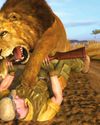
Cabela's Dangerous Hunts 2009
Initially debuting on the PC in 1998,games began appearing on consoles from 2001 with the release of Cabela's Big Game Hunter: Ultimate Challenge for Sony's PlayStation.
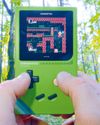
ModRetro Chromatic
Meet the new handheld aiming to provide the ultimate Game Boy experience
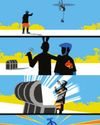
ULTIMATE GUIDE Project Rub
OF ALL THE GAMES THAT LAUNCHED WITH THE NINTENDO DS, NONE WERE AS INVENTIVE, CHARMING, OR OVERLOOKED AS PROJECT RUB. TWENTY YEARS LATER, SONIC TEAM'S DS DEBUT REMAINS ONE OF THE SYSTEM'S MOST ENJOYABLE AND ENDEARING GAMES

Wii Balance Board
During the era of the DS and Wii, Nintendo didn't just want to sell games consoles - it wanted to sell the dream that self-improvement could be fun, whether you were exercising your mind in Dr Kawashima's Brain Training or your body with Wii Sports.
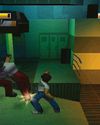
THE MAKING OF JACKIE CHAN STUNTMASTER
MOST GAMES WITH A REAL PERSON'S NAME IN THE TITLE HAVE ACTUALLY VERY LITTLE TO DO WITH THEM. BUT THERE ARE SOME STARS WHOSE INFLUENCE ON A GAME GOES FAR BEYOND THEIR FACE AND VOICE. ONE OF THE MOST IMPORTANT OF THESE IS THE GREAT ACTION GOD HIMSELF: JACKIE CHAN
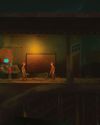
Future Classic
Modern games you'll still be playing in years to come

SUPER VEHICLE-001 METAL SLUG TACTICS
SNK'S METAL SLUG SERIES IS ONE OF THE MOST ICONIC RUN-AND-GUNS AROUND WITH A LEGACY AS RICH AS ITS METICULOUS 2D ART. SO WHAT CONVINCED SNK TO GREENLIGHT AN ISOMETRIC TACTICAL RPG? WE SPEAK TO LEIKIR STUDIO'S CREATIVE DIRECTOR AURÉLIEN LOOS TO FIND OUT MORE

MAGAZINE CRAFT PAUL DAVIES
In the first of a brand-new series, we interview the game journalists behind the most iconic gaming magazines of the past. We kick off by speaking to Paul Davies about his time as editor of CVG. We discuss the videogames that hooked him growing up, his time in the industry, and how he became an unlikely hero in revamping the iconic multiformat mag
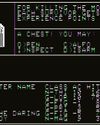
THE MAKING OF Wizardry PROVING GROUNDS OF THE MAD OVERLORD
THE CREATORS OF THE INFLUENTIAL 1981 RPG WHICH WENT ON TO INSPIRE COUNTLESS TITLES, FROM DRAGON QUEST TO FINAL FANTASY EXPLAIN HOW IT HAD ITS ORIGIN IN SOME OF THE EARLIEST ONLINE EXPERIENCES, AND WAS ONE OF THE FIRST COMPUTER GAMES TO COME IN A BOX
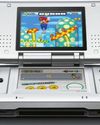
20 Years of The NINTENDODS
NINTENDO'S QUIRKY HARDWARE DESIGN MAY HAVE RAISED A FEW EYEBROWS TWO DECADES AGO, BUT THE BRILLIANT GAMES IT ENABLED DREW IN PLAYERS REGARDLESS OF AGE OR GENDER. RETRO GAMER SPEAKS TO THE PEOPLE WHO MADE, SOLD AND DEVELOPED GAMES FOR THE DS AS WE CELEBRATE THE BEST-SELLING HANDHELD EVER